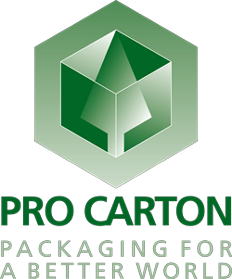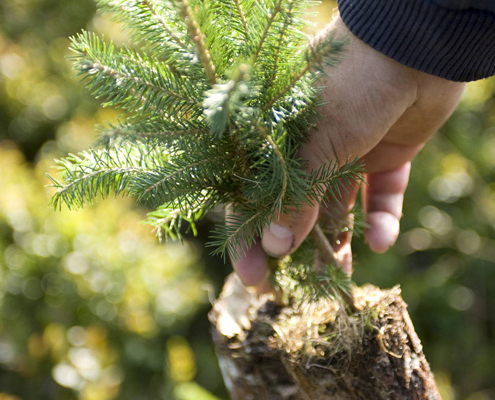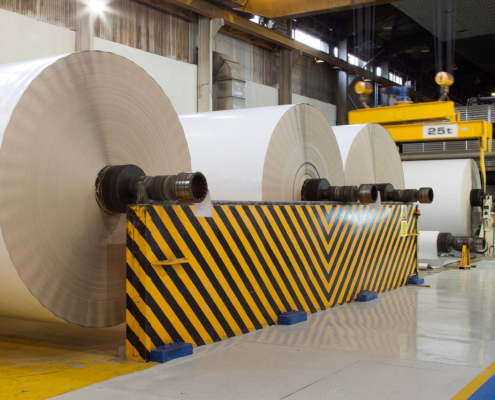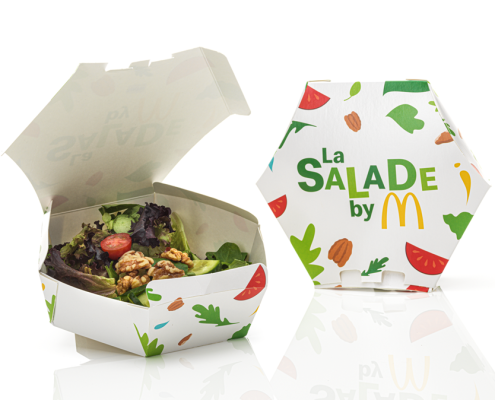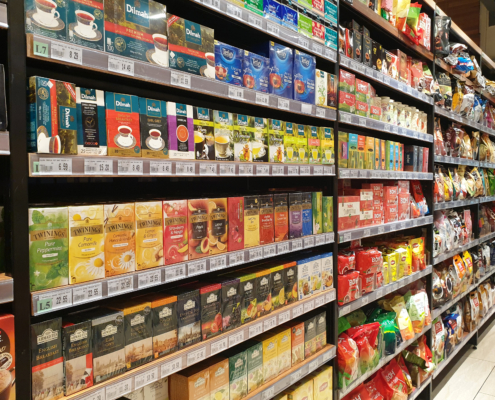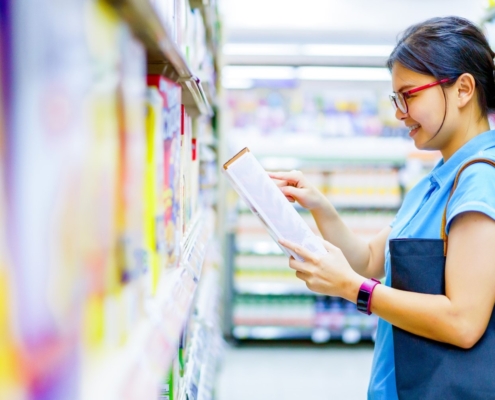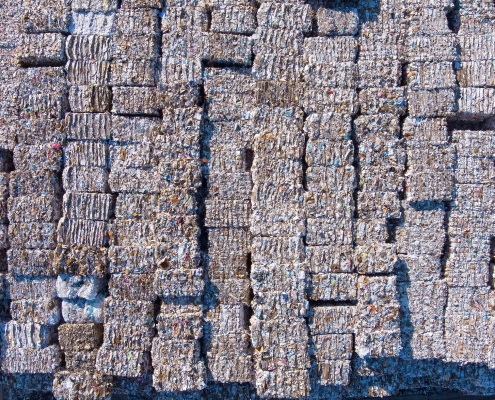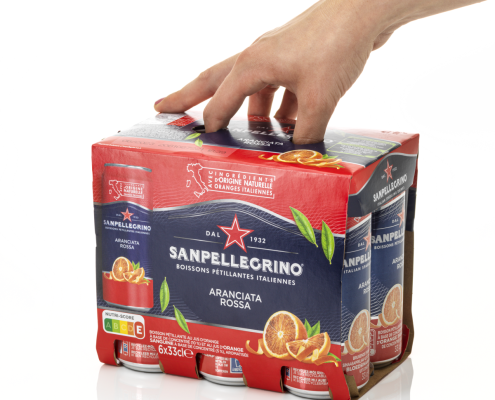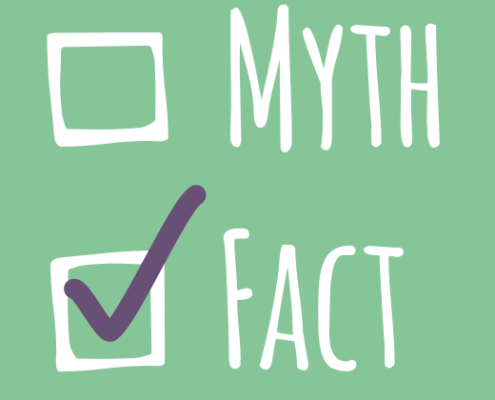Packaging Preserves Our Resources
Packaging preserves our resources by efficiently protecting goods and at the same time conserving more resource than it uses. Significant factors in preserving our resources include:
- The choice of packaging material
- Innovations in packaging to incorporate and improve its sustainable characteristics
- Reusing and recycling packaging
- Energy efficiency of manufacturing process
The ability to recover and recycle used packaging at the end of its lifecycle also helps to save resources. Latest studies prove that a carton fibre can be recycled more than 25 times.
Raw Material Use
Raw Material Use as a resource category covers living (biotic) and non-living (abiotic) material. In the context of the resources used to make cartonboard packaging, biotic material covers wood fibres from the forest, used as the raw material for cartonboard – A renewable resource. Abiotic material includes the fossil energy used from burning coal and gas and also the minerals for cartonboard and carton production. These resources are non–renewable, and the industry is committed to finding ways to reduce the use of these resources and/or replace them with renewable or environmentally friendly alternatives.
Eco-design principles applied to the manufacture of a product should lead to the efficient use of resources. For a carton there is no such thing as “end of life”. Cartons are a valuable resource as a raw material for new packaging. Recycling is the best way to support the circular economy model. Composting is second in line, incineration is the least desirable option for the use of post-consumer waste. We want all fibre material to come back to the manufacturing process – each carton counts!
Eco Design and Recyclability of Cartons
Eco-design is an important aspect of Resource Efficiency, influencing waste prevention and improved recyclability.
Waste Management is a key driver for Resource Efficiency and waste prevention is at the top. Reducing the quantity of waste generated in the production process of cartonboard packaging has been a central focus for the industry for many years, which has long recognised the economic and environmental benefits of waste reduction.
The environmental benefits of recovering paper for use as a secondary raw material are well appreciated and cartonboard manufacturers are working to optimise its use and thus reduce waste. Increasing efficiency of stock preparation through investment in modern technology has led to an increase in the recuperation of recovered fibres, by several thousand tons per year, and the reduction of rejects from the production process.
Cartonboard manufacturers have worked to light weight their products over many years. For example, a carton packaging for frozen food products is 20% lighter today than it was in the 1970s. (Source: INCPEN)
Carton manufacturers are also continually working to reduce the amount of materials used and substantial savings have been achieved through clever design solutions. For example, reducing the flaps on biscuit cartons.
Good recyclability of used cartons also depends on good eco-design. The planning and design phases of carton solutions contribute significantly to waste prevention.
Informed choices of auxiliary materials such as Inks and Coatings is also key to good eco-design. Sheetfed inks are integrating up to 100% renewable vegetable oils, and deliver significant improvements, including the reduction of VOC (Volatile Organic Compounds) emissions. Converters realise significant savings in energy consumption by rapid setting during the printing process or reduced paper wastes through quick start-up in production.
Energy Use
The European pulp, paper and board industry is a leader in sustainable energy use. The majority of all primary energy used in the industry is biomass based, with the wood by-products providing renewable energy in the form of electricity and steam for the manufacturing process.
The industry is the largest producer and consumer of biomass based energy which helps to avoid the use of non-renewable energy sources such as fossil-based oil, coal or gas. This also means the industry is more carbon efficient.
Over 90% of European cartonboard mills have installed Combined Heat and Power (CHP) plants, mainly based on biomass and natural gas. Both the energy and the heat that are produced are used in cartonboard mills. Their energy consumption fell by 10.5% between 2010 – 2018.
What Is Biomass Energy?
Biomass is biological material from recently living organisms and it is a renewable resource. Biomass energy is generated from processing biological material, usually plant matter. In the cartonboard industry, chemical pulping of wood fibres results in a by-product which is used as an energy source for the pulping process. In integrated cartonboard mills, where pulp and cartonboard are both made at the same site, the wood by-products provide energy in the form of electricity and steam for the manufacturing process. This energy source is therefore renewable and sustainable.
Cartonboard mills are contributing strongly to biomass energy improvements. Investments are being made in cartonboard mills to completely eliminate all fossil carbon emissions by switching the energy supply from fossil fuels, such as natural gas, to biofuels. All production will then be biofuel driven and cartonboard mills will be self-sufficient in electricity and thermal energy in the form of steam.
Water Use in Cartonboard Production
Water is an essential element for paper and board production. Water acts as a bond between fibres, and in the production process is needed for transporting, cleaning, as a solvent, carrying energy in the form of steam and also in cooling process units. Water is used:
- to process chemicals – cartonboard mills use water to prepare and dilute chemicals
- as a cooling medium – used in various parts of the production process
- as a transport medium – fibres are carried through the production process in water. When the pulp reaches the cartonboard machine it is 99% water and most of this water is then re-used.
- to produce steam – steam is used to heat the process equipment, including the drying cylinders on the cartonboard machine
Water is usually taken by a cartonboard mill from a nearby surface source such as a lake or river. 95% of the water used in the European industry is cleaned and reused on site. All waste water is purified on site in accordance with European regulations and standards, before being returned to the environment. More than 90% of water used in the production process is cleaned and returned back to the environment. Paper and cartonboard mills are working to further reduce water use. Water in the production process will be cleaned and reused several times. All production processes minimise the use of fresh water. The result over the past two decades has been to , a significant contribution to protect our environment.
Water Treatment
The methods of treating water before it is discharged from the cartonboard mill vary from site to site depending on local conditions and they are regulated by environmental permits.
- Mechanical Treatment: Discharged Water is channelled into controlled areas where fibre particles sink to the bottom and are completely removed before clean water is discharged back to the environment.
- Biological Treatment: Organic Substances that are in the discharged water are broken down with the aid of micro-organisms, similar to the natural process. Only clean water leaves the factory.
- Chemical Treatment: Effluent water is treated with chemicals that cause contaminants to precipitate after which they are completely removed mechanically. Water receives regular laboratory checks before it is discharged back to the environment.
Water Footprint
The idea of providing a footprint for the use of water is becoming increasingly important and as well as carbon, water is a resource that the paper and board industry has to account for. Minimising fresh water consumption and reusing water in production processes is a priority for the industry. Evaluating water use is even more challenging than measuring carbon footprints. To prepare for this, the Confederation of Paper Industries (Cepi) is a member of the Water Footprint Network and other related associations that look to contribute to the development of a methodology and to share experience gained through involvement in forest certification.
In 2008, CEPI developed new definitions for water use with a local perspective and created a profile of the water used for manufacturing pulp and paper products in its member countries. In 2019, CEPI updated this profile and found that member companies withdrew approximately 3345 Million M3 in comparison to 3710 Million M3 in 2012 and 4,000 million M3 in 2008 and that 93% of water used was returned to the environment in good quality.

